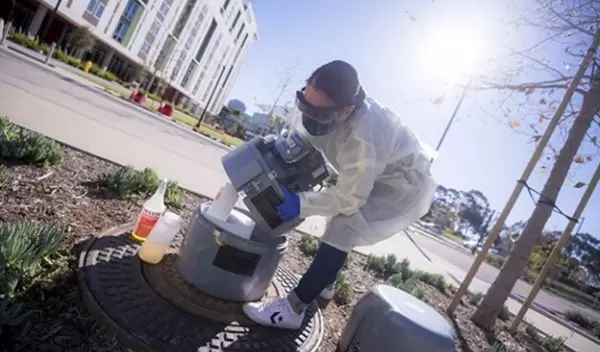
Awash in potential: Wastewater provides early detection of SARS-CoV-2 virus
Writing in the journal Nature, scientists at the University of California San Diego and Scripps Research, along with local and federal public health officials, describe how wastewater sequencing provided dramatic new insights into levels and variants of SARS-CoV-2 on campus and in the broader community -- a key step in public health interventions in advance of COVID-19 case surges. The work was supported by the U.S. National Science Foundation.
"This project, funded through NSF's rapid response, or RAPID, mechanism, is a great example of how researchers can take advantage of breaking opportunities to apply research outcomes to address problems of contemporary significance," said Peter McCartney, a program director in NSF's Division of Biological Infrastructure.
The authors said the approach, deployed by UC San Diego as part of its Return to Learn efforts and then more broadly in the surrounding region, is a scalable, cheaper and faster way for communities and regions to detect the coronavirus and take appropriate actions.
"The coronavirus will continue to spread and evolve, which makes it imperative for public health that we detect new variants early enough to mitigate consequences," said co-senior study author Rob Knight, director of the Center for Microbiome Innovation at UC San Diego.
"Before wastewater sequencing, the only way to do this was through clinical testing, which is not feasible at large scale, especially in areas with limited resources, public participation or the capacity to do sufficient testing and sequencing," Knight continued. "We've shown that wastewater sequencing can successfully track regional infection dynamics with fewer limitations and biases than clinical testing to the benefit of almost any community."
People with COVID-19 shed the virus in their stool, whether or not they have symptoms. In the summer of 2020, Knight and colleagues leveraged that fact to begin robotic sampling of wastewater on the UC San Diego campus.
In March 2021, wastewater surveillance went regional, with multiple samples sequenced each week from San Diego County's primary wastewater treatment plant at Point Loma, with a catchment size of 2.3 million people.
"We know that other pathogens, ranging from influenza to monkeypox, can be detected in wastewater," said Knight. "Working with county, state and national public health organizations to expand this system beyond SARS-CoV-2 will revolutionize our ability to respond not just to this pandemic, but to future ones."
